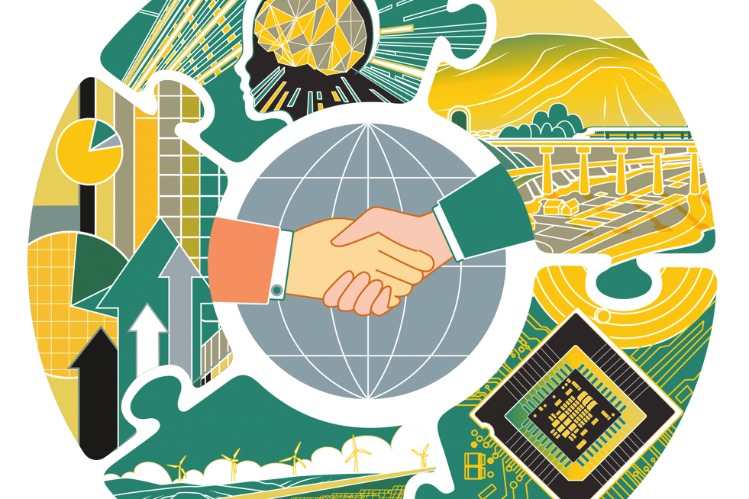- October 23, 2025
- Posted by: Regent Harbor Team
- Category: Global Economy

Contents
- 1 The Global Implications of US-China Tech Tensions
The Global Implications of US-China Tech Tensions
Technological Warfare and Strategic Implications
The United States has embarked on an aggressive campaign against Chinese private enterprises, particularly those in the high-tech sector. Executive orders have targeted key Chinese companies, limiting their cooperation and access to critical technologies. Further, the US has acted to sever Chinese firms from essential semiconductor supplies, imposing restrictions on their access to global software and platforms. Essentially, these extreme measures are part of a broader US strategy to curb China’s ascent in global innovation and value chains.
Building a Digital Iron Curtain
Washington aspires to create global anti-China tech alliances. This “digital iron curtain” aims to suppress China’s advances in crucial sectors like 5G and artificial intelligence. To counter these maneuvers, China must rely on its own capacity and ingenuity, ensuring its technological progress is grounded in security.
Balancing Development and Security
China’s strategy includes balancing development and security, reinforcing bottom-line thinking, and constructing a security framework to mitigate risks. National development is complex and requires balancing speed with protection. Just as a high-speed train needs robust tracks, advances in artificial intelligence must be guided by ethical considerations. This balance ensures that technological advancements do not harm humanity.
The Historic Lessons of Security
Following the Opium War of 1840, China realized the necessity of safeguarding national sovereignty. This painful history marked a deep national crisis. Subsequently, China has developed a unique approach to national security, emphasizing the safety and well-being of its people. It protects farmland, energy, and data to maintain living standards and infrastructure.
The Ethos of Win-Win Cooperation
China’s path does not revolve around zero-sum competition. Concepts like “win-win cooperation” and “harmony as priority” have been central to Chinese culture for millennia. President Xi Jinping, at the 2013 G20 Summit, advocated for a shared future for humanity. This vision calls for nations to cooperate amid competition and pursue mutually beneficial outcomes.
Challenges in the Current Global Landscape
The world today is rife with geopolitical risks and uncertainties. Unilateralism and protectionism are on the rise, often heralded by the US with arbitrary tariffs. Such actions have stymied global economic growth. Amidst this instability, China’s new security architecture offers a timely response for steady development.
A Peaceful Development Path
Historically, Western powers have wielded military might to expand influence. China, learning from past vulnerabilities, seeks a peaceful environment for its progress. The Chinese people strive to enhance economic growth and technological capacity, not only for self-protection but also to reduce global conflicts and foster peace.
China’s Role in Global Prosperity
China’s development has opened global opportunities. The nation has greatly benefited from economic globalization but has also been a significant contributor. Its role has been pivotal in stabilizing the global economy during crises, such as the Asian financial crisis in the 1990s and the 2008 international financial crisis.
A New Opening-Up Strategy
In response to global challenges, China champions cooperation and mutual benefit through its new opening-up strategy. Visa policies have been relaxed, and sectors like services, investment, and the digital economy have been further opened. China’s Belt and Road Initiative champions bilateral free trade agreements and institutional opening in capital flows.
To delve deeper into China’s global influence, you might explore this article for more context on China’s economic evolution.
Pursuing a Balanced Development Paradigm
Through its open development strategy, China seeks to dismantle barriers to globalization. This approach advances global governance reform, lending stability to the world’s shifting development landscape. China’s balance between development and security offers practical pathways to resolve current global dilemmas.
The opinions expressed herein are those of a professor and deputy head at the University of International Relations. They do not necessarily reflect the views of China Daily.
For those with expertise or opinions to share, contributions are welcomed at opinion@chinadaily.com.cn and comment@chinadaily.com.cn.
